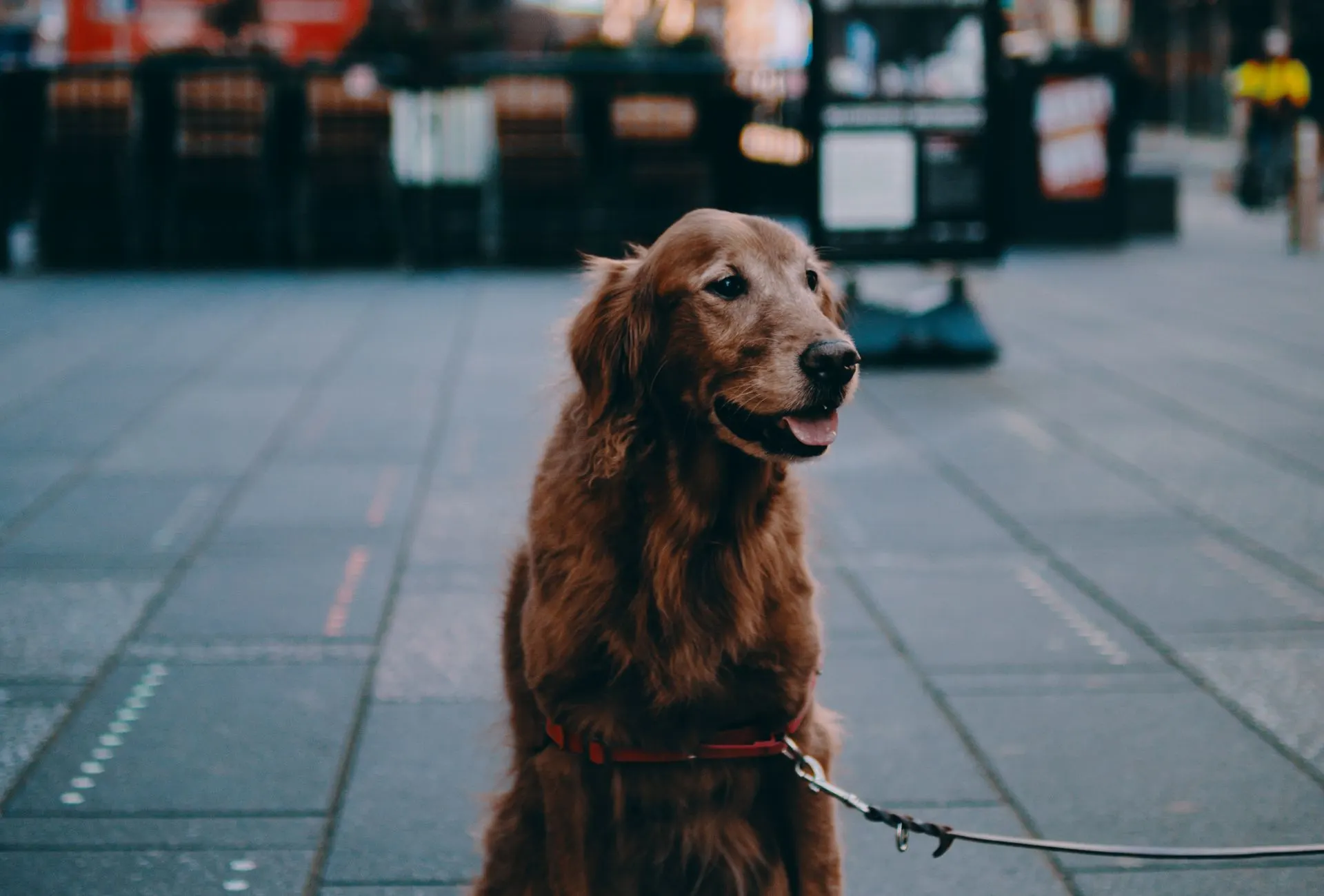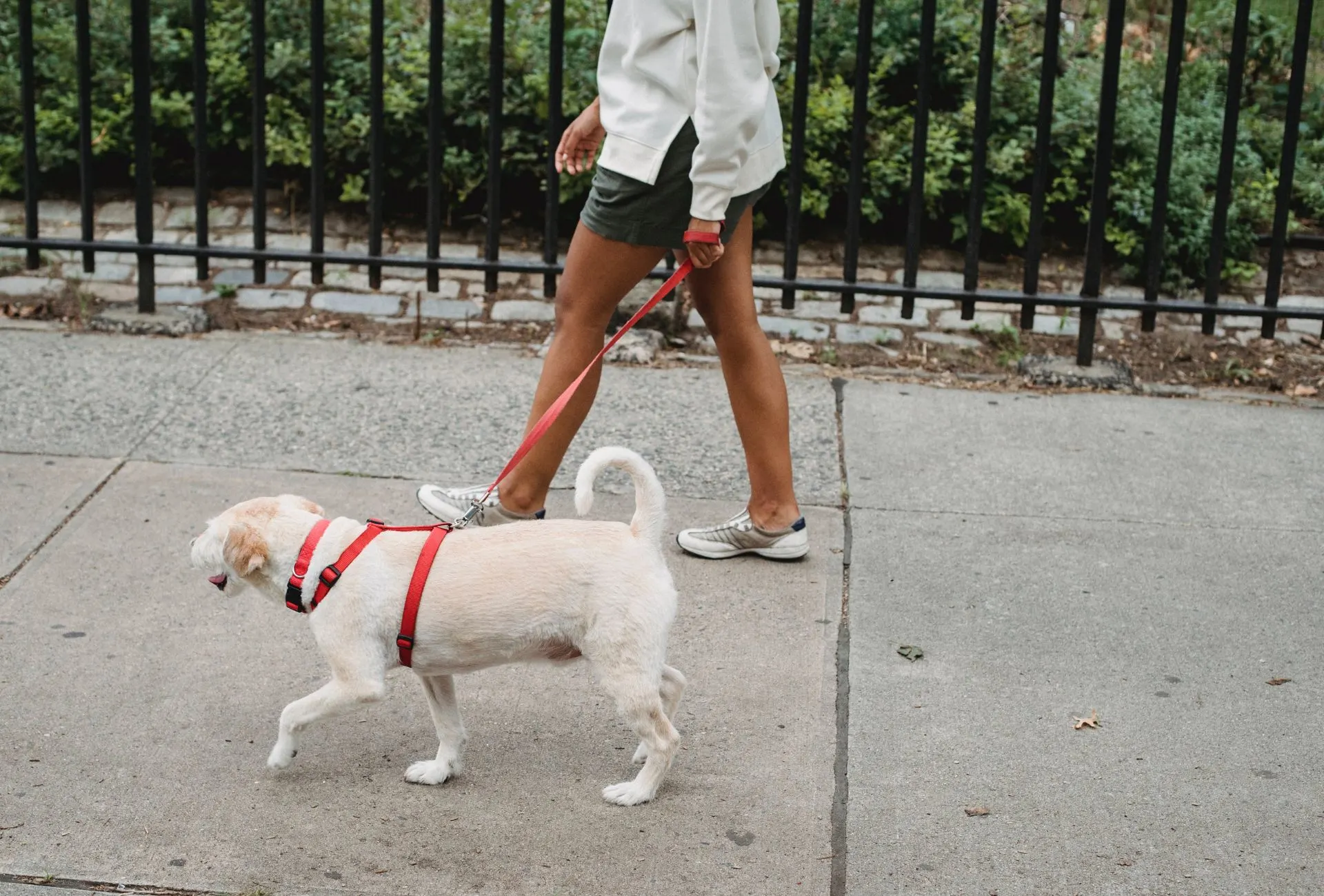About 56% of the world’s population live in cities and these numbers are expected to rise1.
Many of those people own dogs and have to take them out on busy streets every day.
Dogs are closely related to wolves, wild animals that roam the woods traveling as much as 30 miles per day2.
As city dwellers, the question quickly arises whether it’s okay for dogs to only walk in the city or if they need nature to be satisfied.
While the concrete jungle might not seem the best place for dogs, they can be happy there and luckily most cities offer many opportunities to enjoy a part of nature with your dog.
Providing your dog with sufficient exercise (especially when he has tons of energy) can be trickier in a city environment.
With a few adjustments, city walks can be fun so keep reading to find out how to achieve this.
Do Dogs Like Walking in the City?
No one can tell you one hundred percent if dogs like walking in the city, however, there is evidence that dogs prefer nature walks to city walks due to the sights, scents, and sounds.
Most dogs love going on walks and it’s the best time of the day for them and the only time they are able to leave their home.
Whether you are stepping out into a busy street or a tranquil forest, regular walks are essential for every dog no matter where you live.

Since dogs cannot talk, they are not able to tell us whether they enjoy a particular activity or not.
Also, every dog is different. Depending on your dog’s personality he might enjoy city walks or not.
This brings me to the first and most obvious point.
Cities tend to be hectic, loud, and crowded which is something that can cause anxiety in many dogs.
A 2020 study3 showed that city dogs are much more fearful and anxious than country dogs.
The large behavioral survey was based on data from over 6,000 dogs and found that the influence of the environment on fearfulness is staggeringly high.
We found a novel association between the living environment of the dog and social fearfulness, as dogs living in a more urban environment were more likely afraid of dogs (70%) and strangers (45%).
Study from 2020 published in Nature.com
This aligns with the evidence regarding humans living in big cities.
If your dog is particularly skittish, he will have a harder time enjoying outings in the city.
When it comes to physical health, dogs living in the city are more likely to suffer from allergies, eye, and ear infections.
Another study4 found that exposure to urban smog can lead to cognitive deficits and brain abnormalities in dogs.
Exposed dogs had frontal lesions with vascular subcortical pathology associated with neuroinflammation, enlarged Virchow-Robin spaces, gliosis, and ultrafine particulate matter deposition.
Study from 2018 conducted in Mexico City published in Science Direct
These findings also align with an older study5 from the 90s.
The findings support the hypothesis that long-term exposure to air pollutants at ambient levels might cause bronchitic lesions (sulphur oxide), emphysematous lesions (nitrogen dioxide) or fibrotic lesions (ozone).
Study from 1996 published in European Respiratory Journal
Due to the close proximity, city dogs are more likely to be bitten by other canines and have a much higher incidence of parvovirus.
One of the biggest health risks of city life is obesity in dogs.
About 90 percent of the city patients I see are battling obesity, but you’ll rarely see overweight country dogs because their lifestyles are more similar to what you’d see in the wild.
If you can get a dog’s weight under control, their anxiety goes down, their behavior problems go down, as well as their risk for cardiovascular issues. It takes a real commitment for city dog owners to carve out time to get pets out running and moving, so they can be healthy and happy.
Dr. Duffy Jones, DVM, founder of the Peachtree Hills Animal Hospital in Atlanta.
These are definitely all factors that contribute to your dog’s potential happiness, however, there are also some advantages of city walks.
Since there are so many people, your dog will have the opportunity to smell the scents of hundreds of people and other dogs.
The hard sidewalks also help in keeping your dog’s nails short which results in fewer trimming sessions.
Cities usually come with more opportunities for your dog to meet other canines and socialize on a regular basis.

How Do You Walk Your Dog in the City?
Walking your dog in the city is very doable and there are a few things you can do to make these walks as fun as possible.
Most people see walking as a physical exercise which is definitely true for humans.
For dogs, walks are mainly about mental stimulation through all those exciting smells and experiences.
However, walking the same route every single day can quickly become boring for the dog and the owner.
If your dog is bored by a specific route, he won’t engage with his environment as much meaning less sniffing and exploration.
This doesn’t mean that you have to completely ditch your route but rather switch things up from time to time.
There might be local trails that you have not tried in your area and places that you have not been to with your dog.
If you have the possibility, try to venture outside your city once in a while or plan a day trip on the weekends.
Walking routes are not your only tool though.
Simply bringing your friend or taking another dog with you can greatly benefit the walk.
You can also bring some toys along that you haven’t used outside or you can incorporate some training.
If you can, choose routes or places where you can legally and safely let your dog off-leash for some extra fun exploration.
When you are back at home, try to let your dog de-stress as much as possible.
A calm apartment environment can help prevent trigger stacking which can quickly occur with the overwhelming amount of impressions in cities.
Safety Tips for Walking Your Dog in the City
Cities can be dangerous places, especially for dogs that have to walk between roads, people, and bicycles.
Fortunately, you can prevent 99% of injuries by keeping your dog on a leash and by always keeping an eye on him.
I see owners walking through the streets without batting an eye at their unleashed dogs all the time.
Apart from stepping onto the road, dogs are also at risk of eating harmful substances (garbage, pigeon droppings, rat poison) on the sidewalks and getting lost in the crowds.
Here are some safety tips for walking your dog in the city:
- Be aware of your surroundings and pay attention to your dog
- Always use a leash (fixed-length)
- Keep your dog on the side away from the traffic
- Let your dog walk in front of you or beside you
- Don’t let your dog eat anything off the street
- Use gear with reflective stripes
- Advocate for your dog and manage interactions
- Teach your dog all the basic commands
- Don’t leave your dog unattended (e.g. leashed outside a store)
Sources
- World Bank, 2023: Urban Development Overview ↩︎
- U.S. Fish and Wildlife Services, 2006: Gray Wolf Biology Q&A ↩︎
- Nature.com, 2020: Inadequate socialisation, inactivity, and urban living environment are associated with social fearfulness in pet dogs ↩︎
- ScienceDirect, 2008: Air pollution, cognitive deficits and brain abnormalities: A pilot study with children and dogs ↩︎
- European Respiratory Journal, 1996: Long-term canine exposure studies with ambient air pollutants ↩︎
